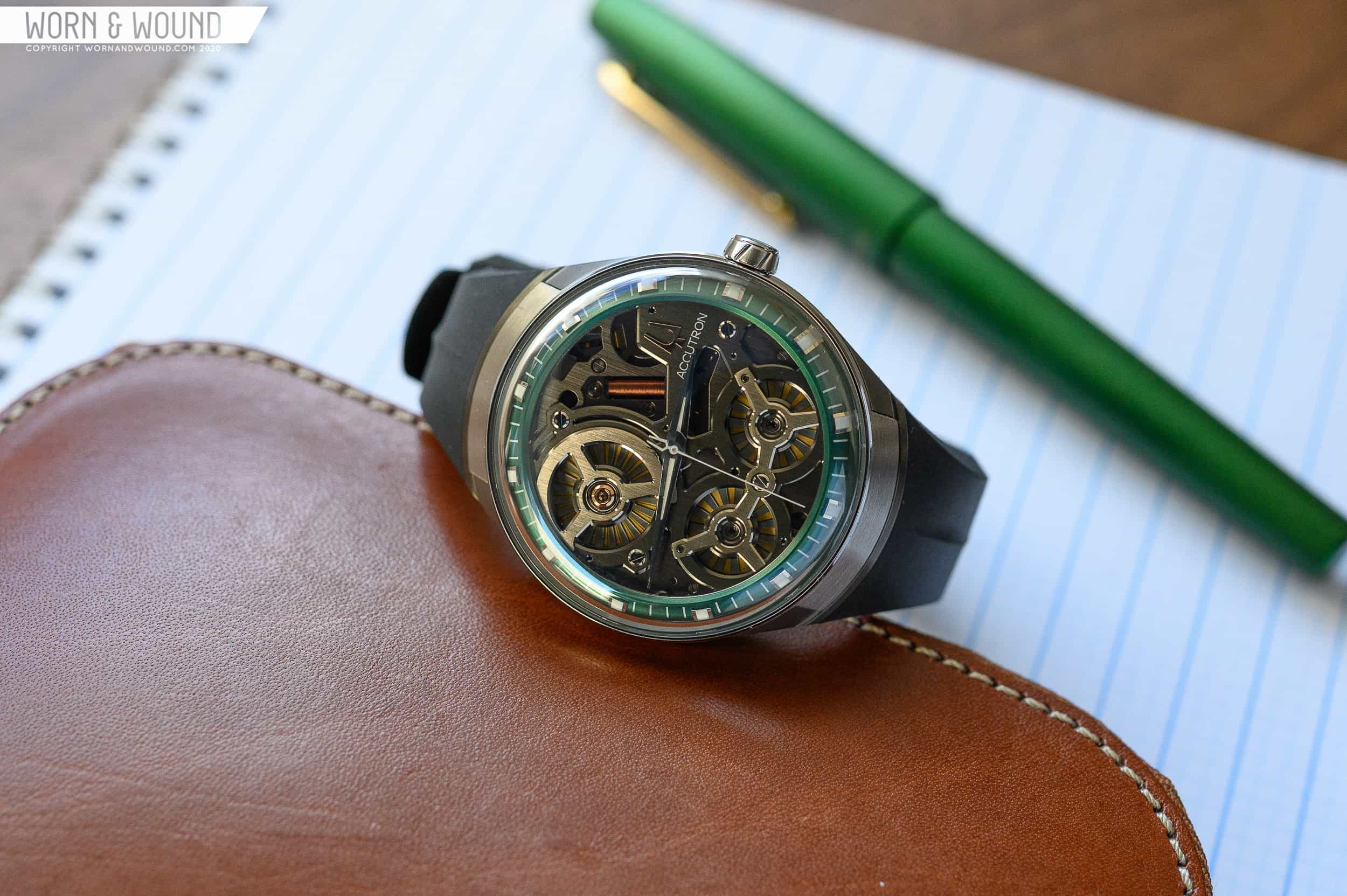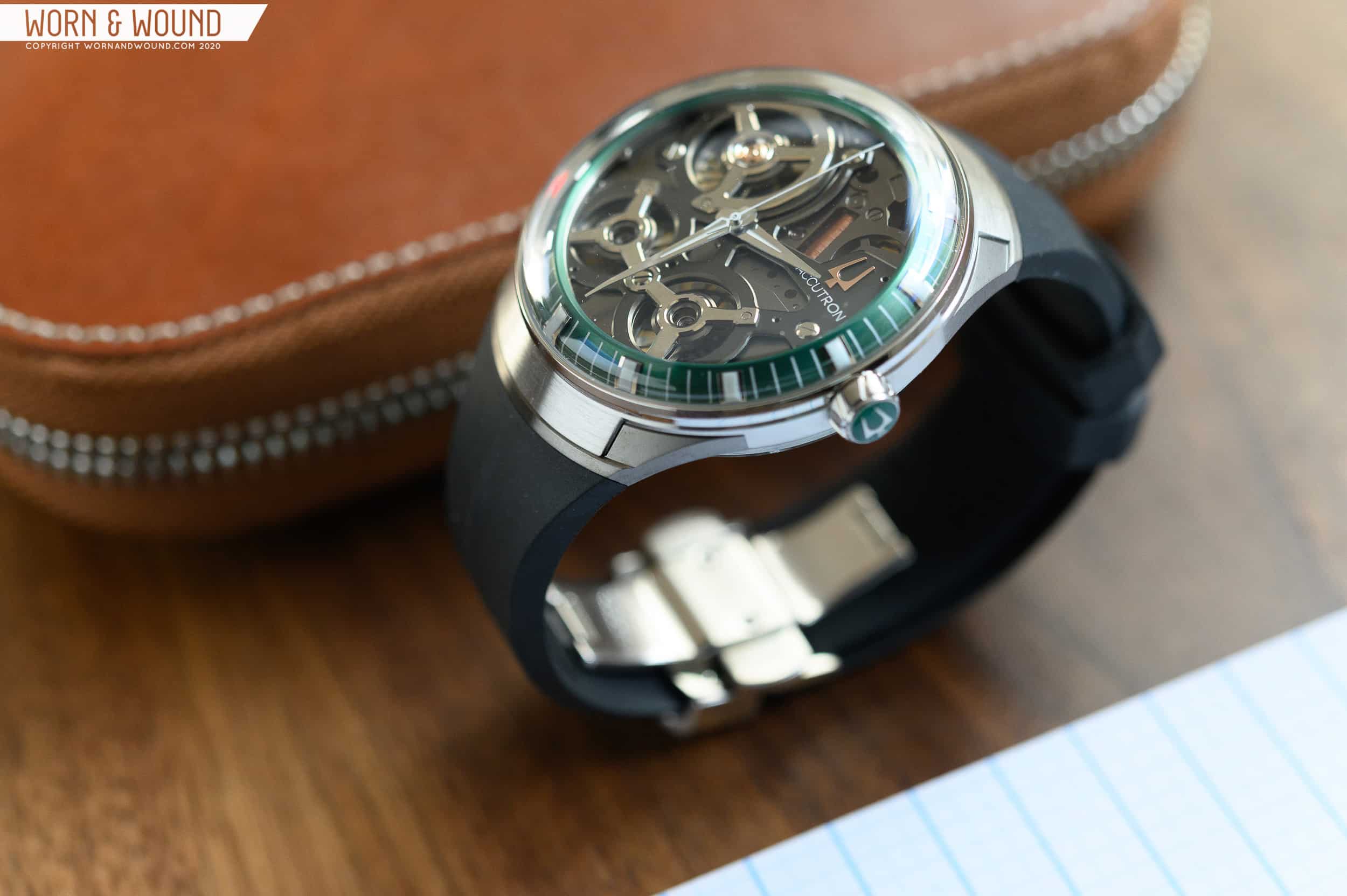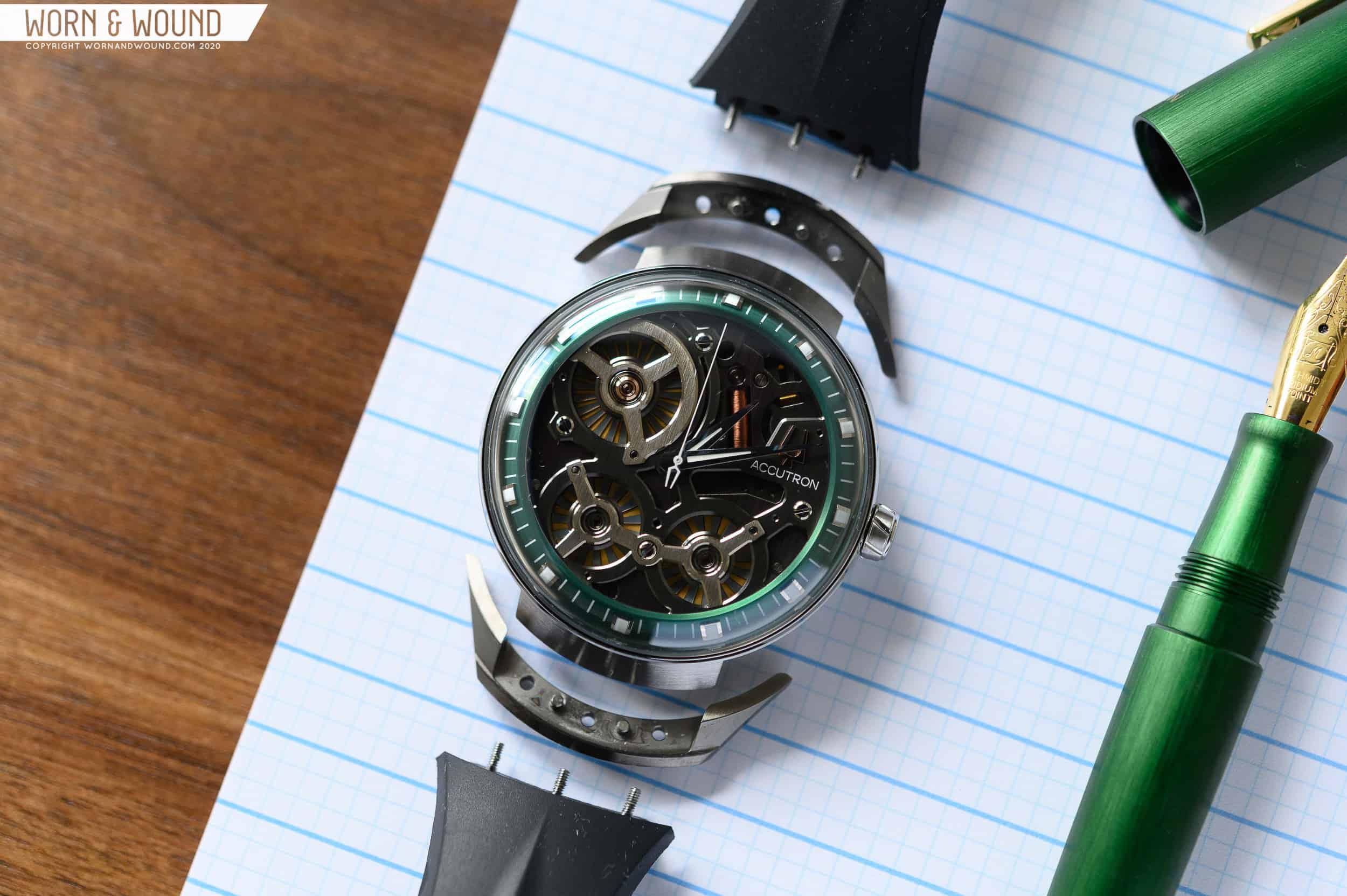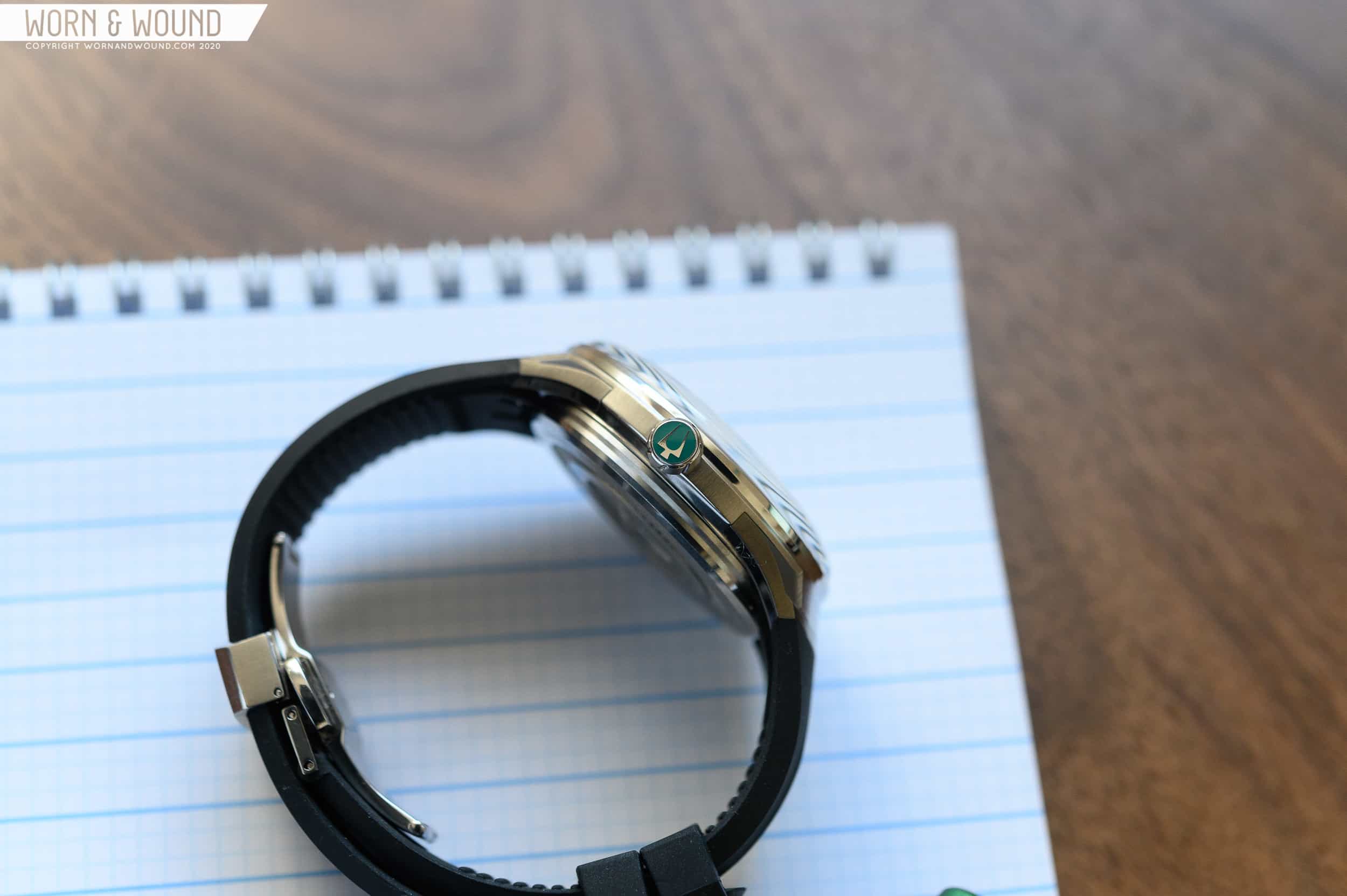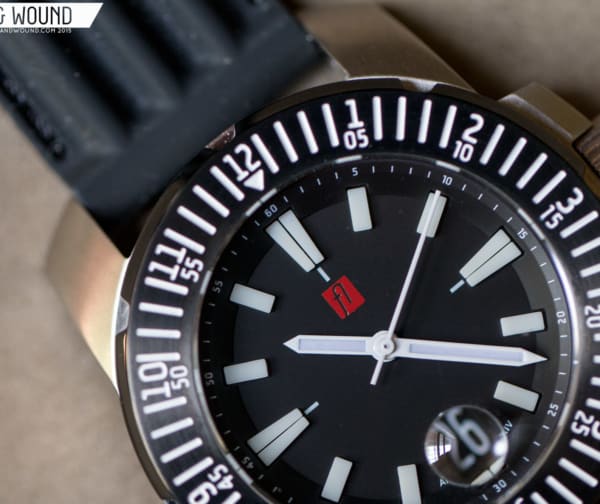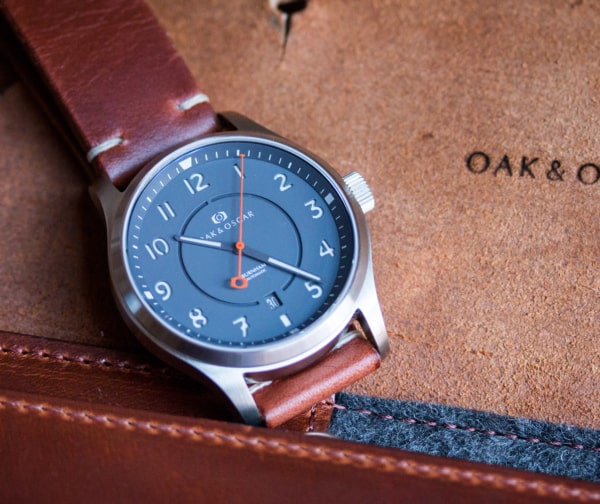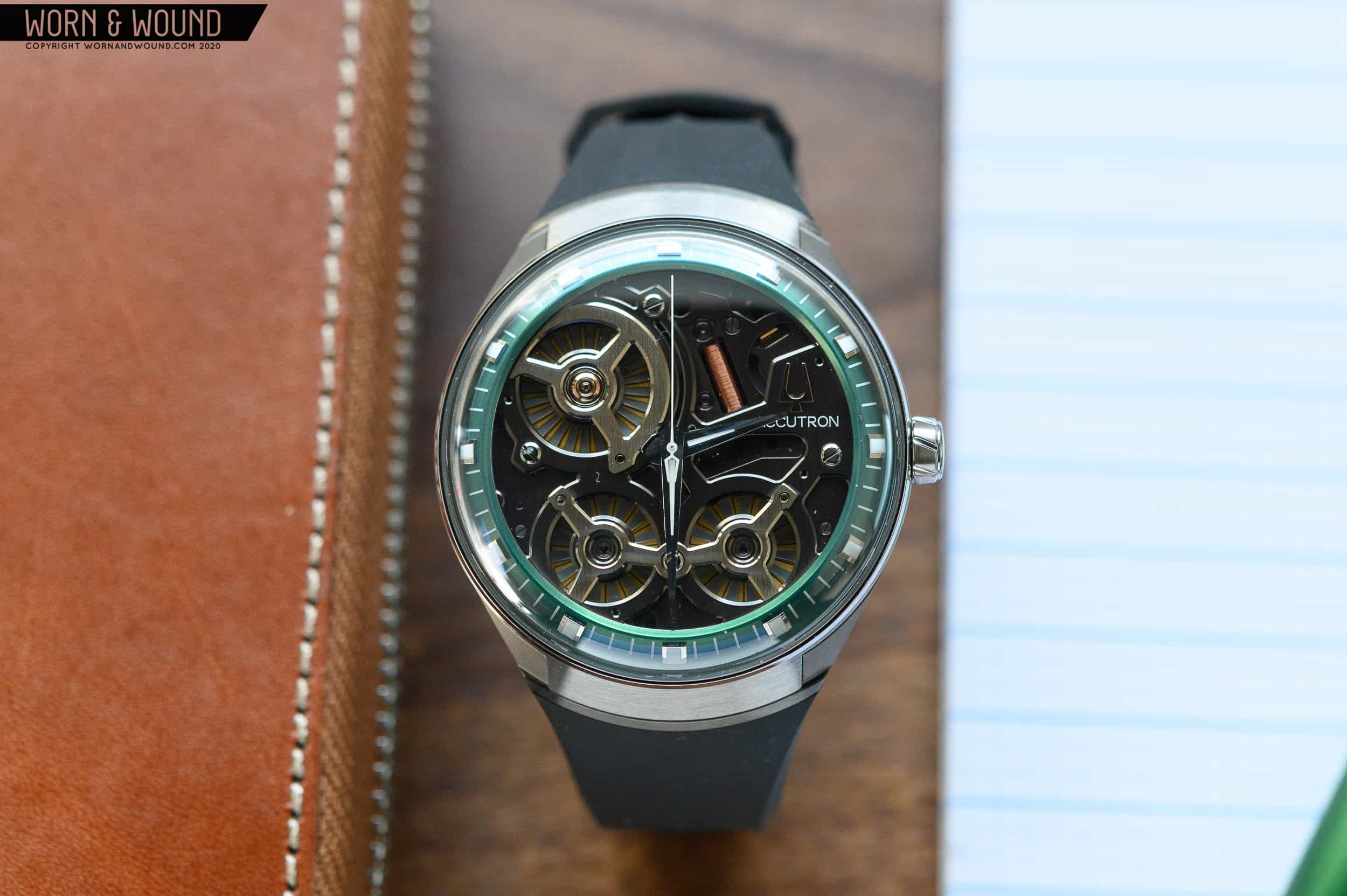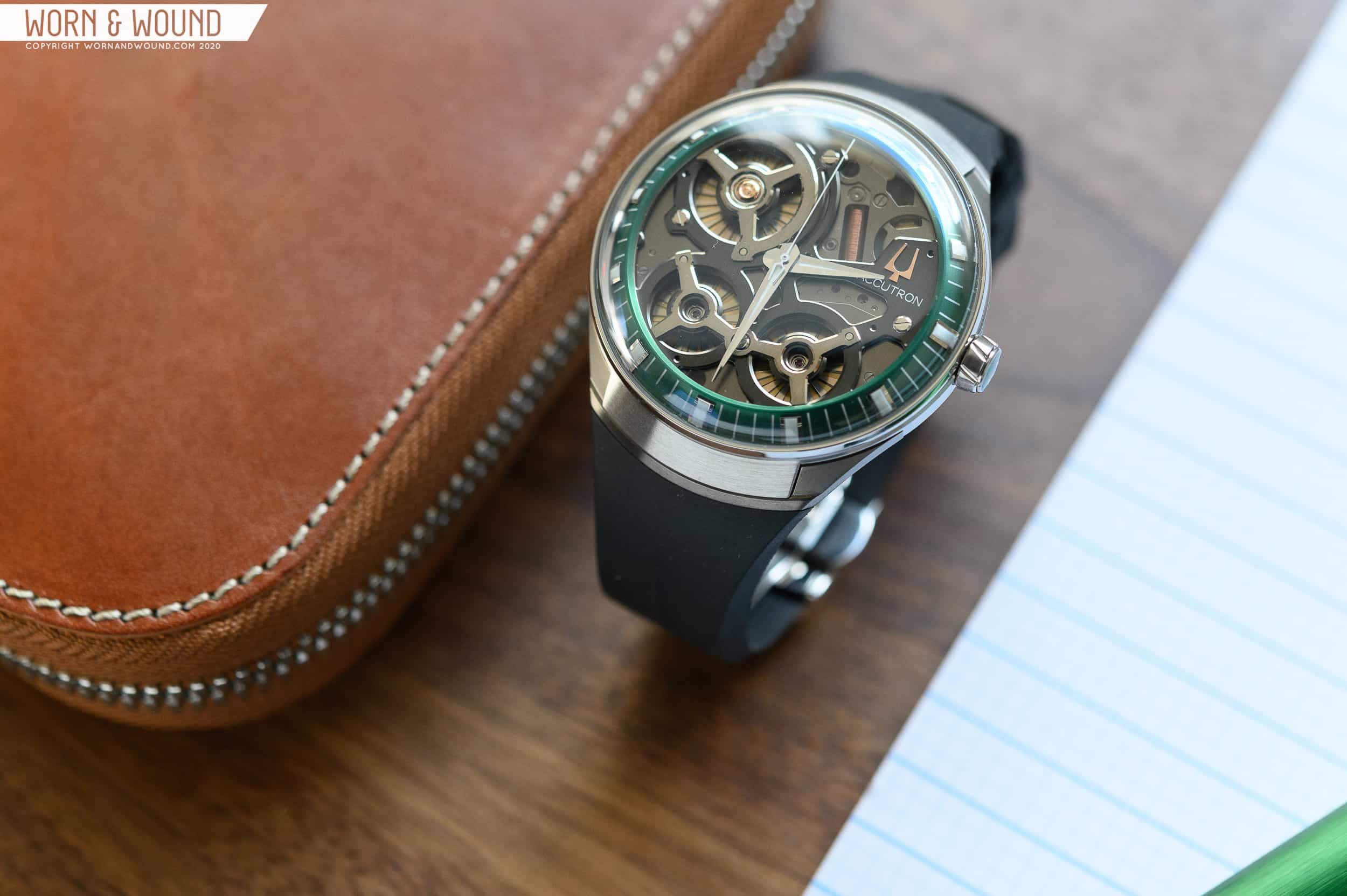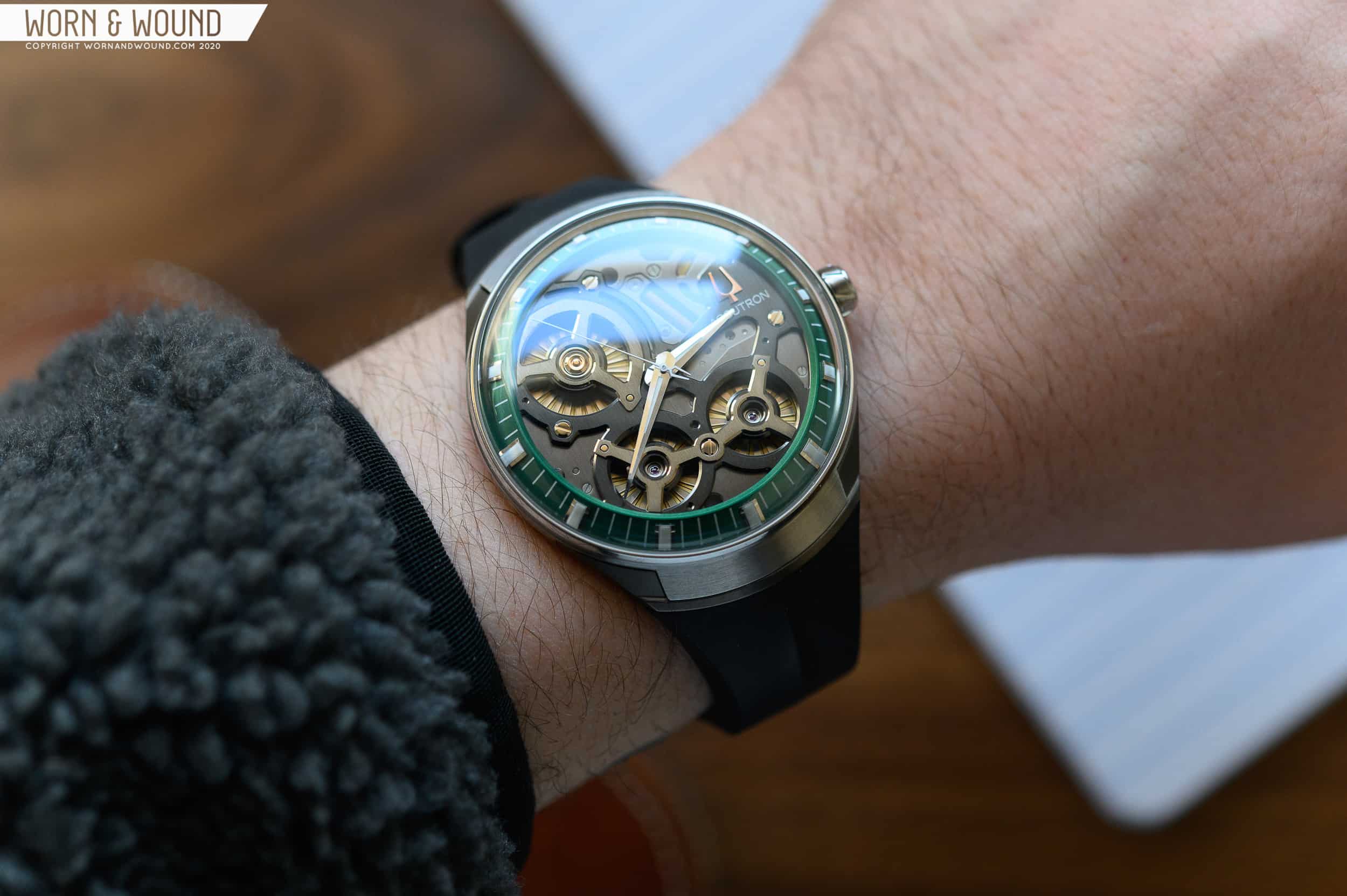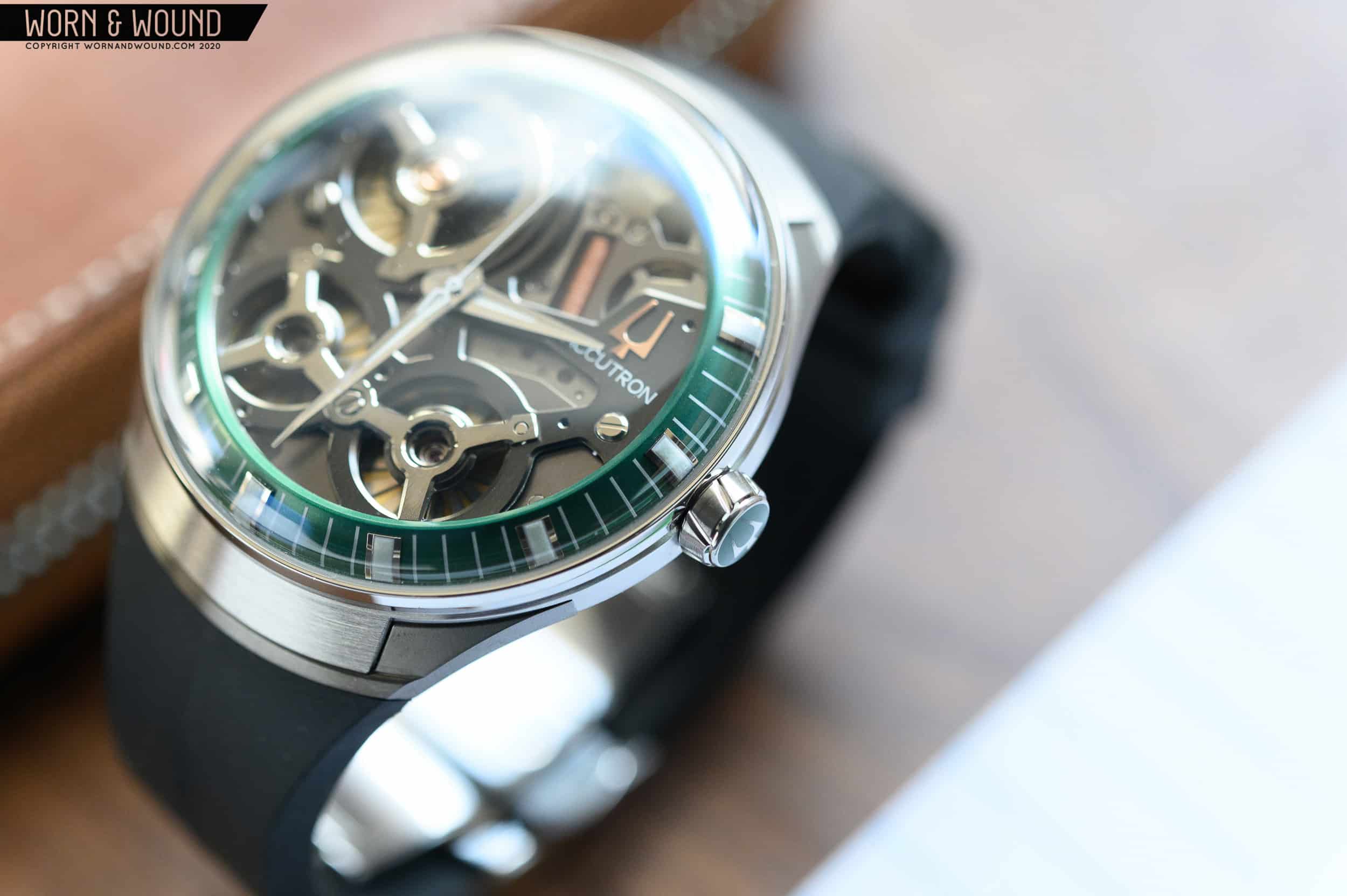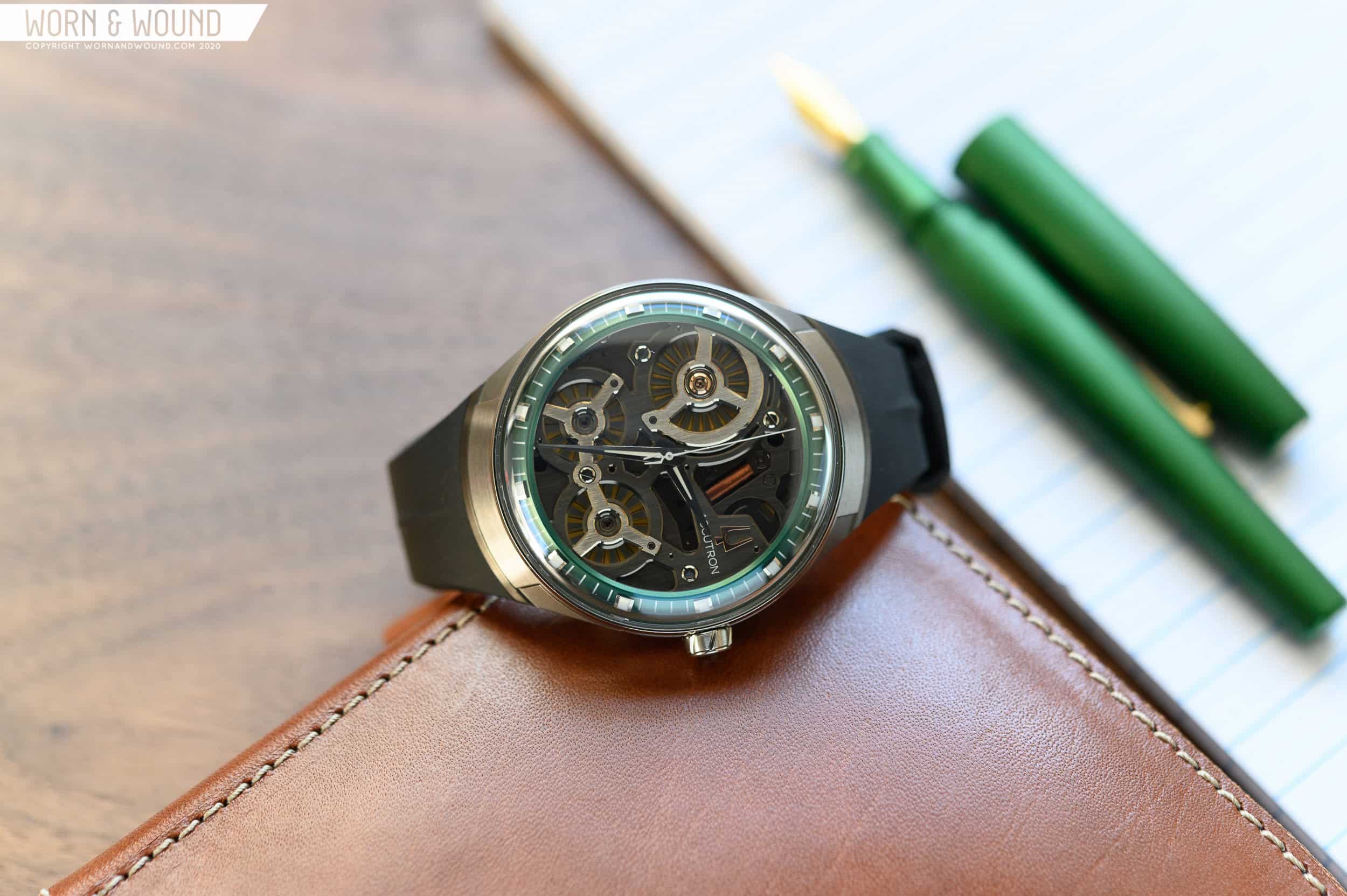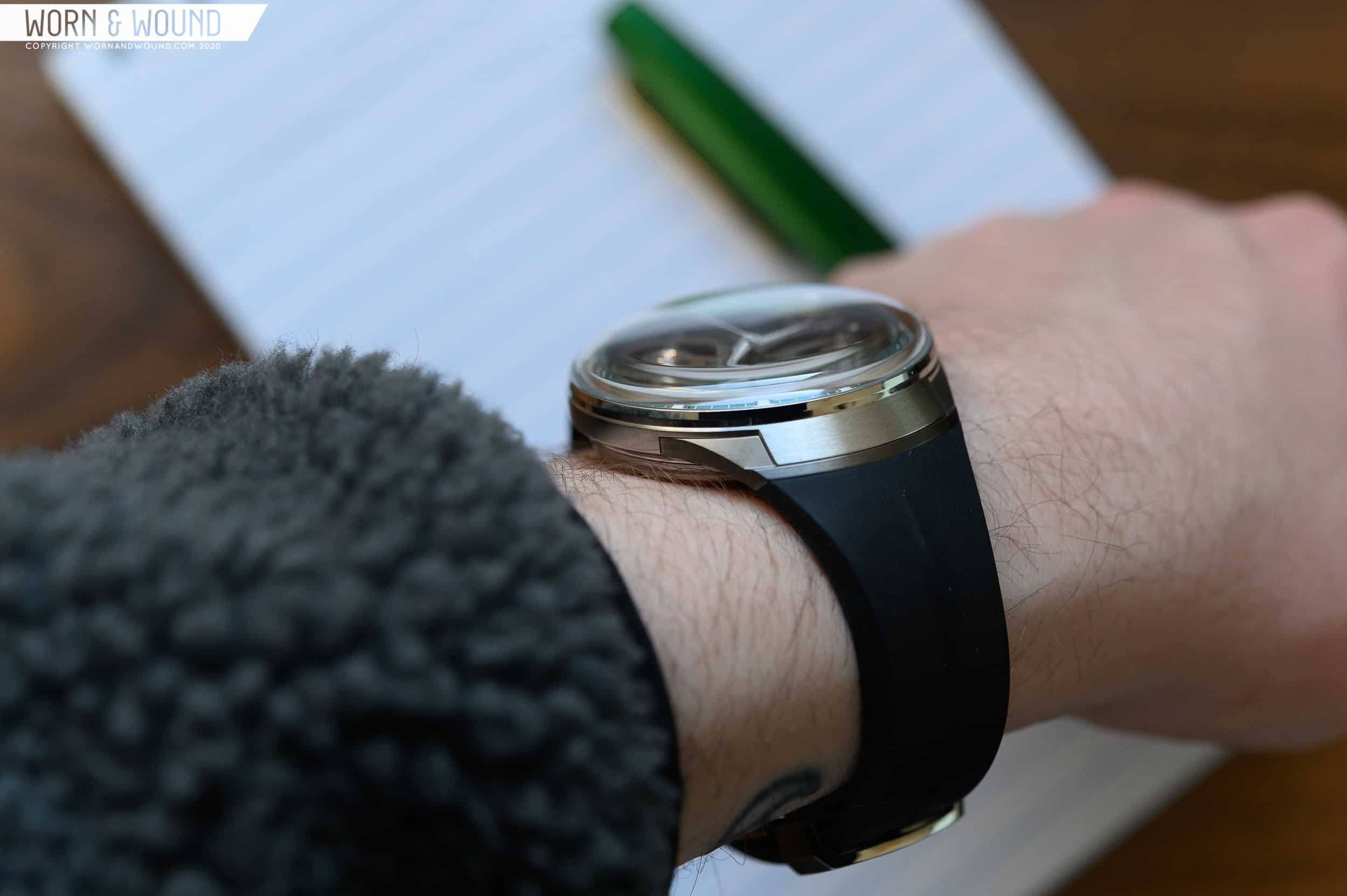Before jumping into this new, forward-looking watch, let’s rewind back to the 1960’s for a minute. With the start of the 1960’s, a new type of watch was invented. One that was guaranteed to be 99.9977% accurate on your wrist with a silky smooth gliding seconds hand, that ran on a power cell for up to a whole YEAR without needing replacement (okay, this was more impressive in 1960 than it is today, but bear with me). With the Space Race about to really take off, it was hard not to get caught up in the mania. Bulova’s Accutron Spaceview was no exception. With its tuning fork, visible coils, wires running throughout, and gears on display, the Spaceview was unlike any other watches out there.
Review: The Accutron DNA
Although the watch’s open dial was originally developed as a “demonstrator” model for salesmen to show off the movement inside, the general public wanted their hands on this unique and futuristic model. After a successful run with over 4 million Accutron watches sold, the quirky Spaceview being one of the more recognizable, has become one of those iconic watches that nearly every horology enthusiast has some awareness. In the late 1970s, quartz movements edged the Accutron’s tuning fork-powered movement out of the market.
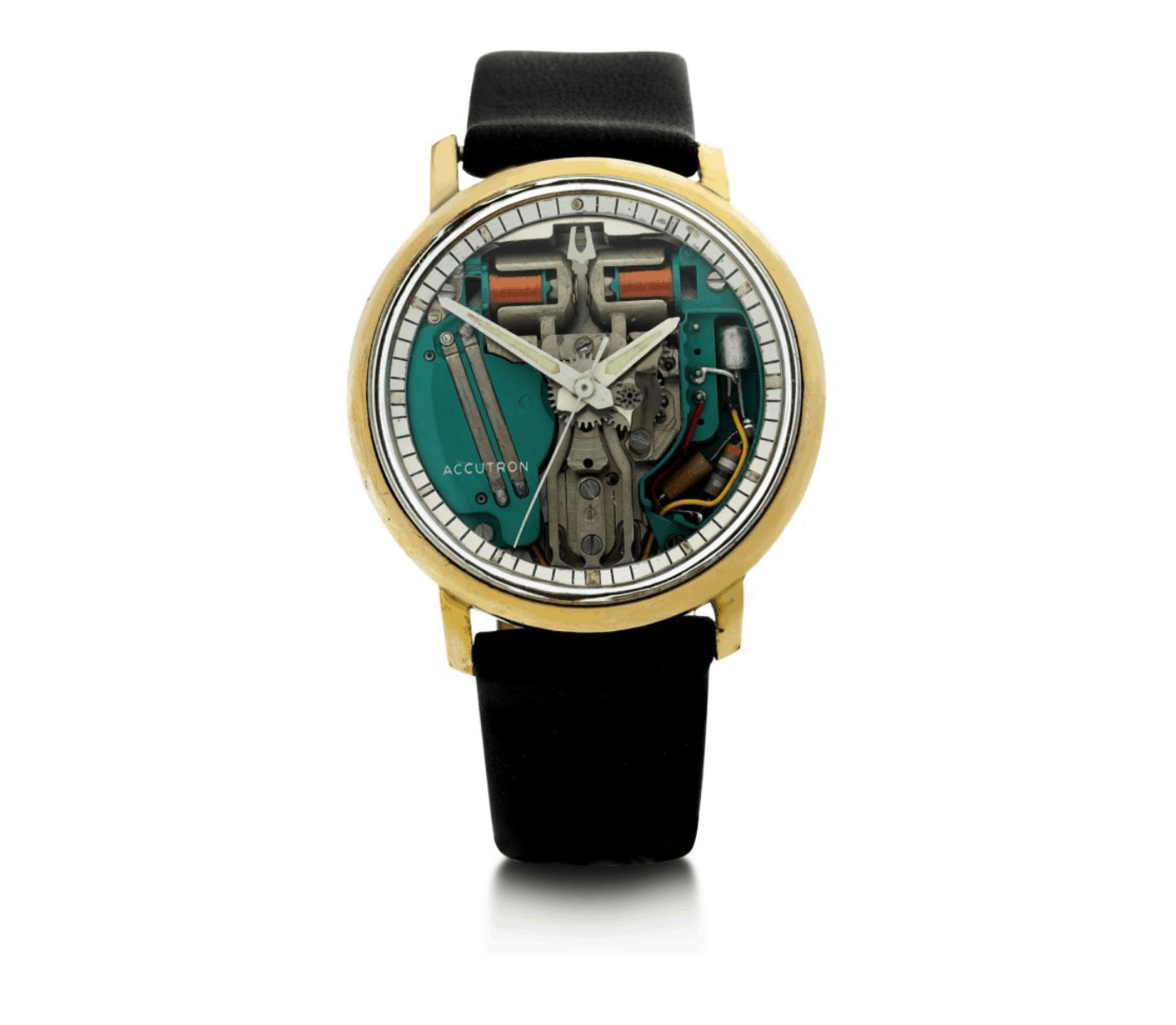
Okay, we’re back in the present. The year is 2020 (yikes), and Bulova is 12 years into their new ownership. Citizen (the now-owner of Bulova and their associated brands) dropped the Bulova name from the Accutron lineup to re-launch the brand with a brand new, future-forward watch that’s packed with brand new movement tech. Today, we’re taking a look at the Accutron DNA. A watch that embraces the spirit of the classic Spaceview, yet manages to stand entirely on its own. The openwork dial has a few callbacks to the vintage watch, but nearly everything else is different. It’s a large watch, at 45.1mm wide and 15.6mm thick, but the spacious case houses one of the most visually interesting movements I’ve had the pleasure of wearing on my wrist. The star of the show is the brand new electrostatic powered movement, which we will get into later on in the review. Let’s break down this fun, funky, and futuristic watch with a bit more detail.
Review: The Accutron DNA
Case
There’s no way around it, this is a big watch. At a hulking 45.1mm wide, with a lug to lug of 50mm and a thickness of 15.6mm, the DNA is imposing. The case and lugs are an interesting blend of metals, made in several different pieces. When viewing the watch from above, you’ll notice the circular shape of the watch. There aren’t traditional lugs, but a curved metal surface where the integrated rubber strap attaches to the underside via a few small screws. This curved surface and strap are actually three separate pieces.
The main case has more of an end link shape than a traditional two-pronged lug, with a chunk of metal that spans between the screw-on lugs that attach to the strap. When you remove the set screws for the strap, the rubber piece comes off, along with the darker metal bracket piece that holds everything together. It’s a unique approach to case design, and the separate pieces give the watch a bit more visual separation than if done by more traditional finishing techniques.
In profile, the case is quite thick, and doesn’t do much to hide that fact. Up top, the huge domed crystal makes up nearly 1/3rd of the thickness. Since the ~5mm crystal is so large and tall, it doesn’t exactly disappear like a domed crystal on other watches. Whereas sometimes you can say that the clear crystal doesn’t contribute to the visual height of the watch, it’s hard to ignore the one present on the DNA. It’s a cool look that you don’t see too often. Moving down, you’ll see a slim mid case with vertical brushing that is made up in part by the strap bracket. A slight undercut transitions downwards into the stepped case back that’s made of a series of brushed and polished steps. A small, push down crown emblazoned with the Accutron logo on a green background is mounted at 3 o’clock. Angled cuts are made in the sides of the crown for grip and contribute to the turbine theme seen throughout the watch.
At a hair over 4mm, the case back doesn’t really nestle into your wrist like on some smaller watches. Finally, on the back of the watch, you’ll find a decorated case back with the Accutron logo in the center, surrounded by a representation of the turbine-style electrostatic motor running around the outside. The design is rendered deep into the surface, featuring a mix of finishes that give it some nice visual appeal. The finishing isn’t winning any prizes here, but it’s certainly good enough in this package. Overall, the case is a bit clunky, but it has to be big enough to showcase the NS30 movement inside. Fortunately, we have a front seat view of this fascinating movement through the open dial.
Dial & Hands
This is where the watch really shines. The dial is essentially just a wide open display for the NS30 Electrostatic movement inside. Around the outermost edge of the dial, there’s a green hour and minute track, which calls back to the green used in the original model from the 60s. Each hour is marked by a block of lume surrounded on either side by a polished strip. For each minute, a printed white hash mark gets the job done. Moving inward, the movement takes the center stage. It’s an intricate mix of bridges, motors, electronic components, and finally the hands.
Each feature is highlighted with brushing, polished chamfers, and a varying degree of depth within the movement itself. There’s a lot to take in, especially considering that the two large electrostatic turbine generators at 5 and 7 jump into motion back and forth with even the smallest movement of your wrist. Three arms hold a jeweled center ring in place that contains the spinning component of the generator. These arms are rendered in brushed steel with polished chamfers on the edges.
The ring around the generators is a darker gun metal color, while the generators themselves are a mix of silver and gold. These two small generators are what create the power needed to keep the movement going. A larger electrostatic motor is mounted at 10 o’clock, featuring much of the same visual design as the smaller generators. One thing you’ll notice is that the seconds hand isn’t always moving. It takes three to five large swings of your arm to get the hand moving, which is driven by this motor at 10 o’clock. So when the watch is charged up by your motion, both the large generator and seconds hand leap into motion, creating a unique visual display that can be quite distracting at times (in the best way possible). The open dial is an excellent call back to the original Spaceview, but this time around we’re treated to a more spectacular display of mechanics and electronics working in perfect harmony.
To tell the time, you’ll be reading off a set of polished hands, which leave a bit to be desired. The hour and minute hands are large, starting wide at the base and tapering to a point at the end. In the middle of each hand, there’s a small strip of lume. Both of the hands are split down the middle, angling down towards the dial from the center line. This split makes the hands a bit more interesting to look at. For the seconds, the DNA employs a very thin hand rendered in white with an Accutron logo-shaped counterbalance on the back end. I understand that they went with such a small and thin seconds hand so that the electrostatic movement could actually swing the thing around the dial without draining the battery, but it looks quite out of balance with the larger hands used for the hours and minutes.
Movement
We know how it looks, but how exactly does the new electrostatic movement inside the DNA work? Well, it’s a bit of a doozy, but it’s not all that complicated. There are plenty of technical articles on the movement floating around the internet if you want to go deep, but a more “explain it like I’m 5 years old” approach might be more valuable. The NS30 takes mechanical energy generated from a rotor, similar to what you’d see in a regular automatic watch. Instead of winding up a mainspring, the rotor spins the two small generators residing at the bottom of the dial. These generators create static electricity that’s harnessed by the generator and transferred into a capacitor.
A capacitor is an electronic component that stores electrical energy. It’s kind of like a battery, except batteries store power in the form of chemical energy, and then later convert it into electrical energy. Capacitors skip the whole chemical route, and store potential electrical energy directly within the component.
They can’t hold as much energy as a battery, thus justifying why the NS30 goes into a power saving mode after five minutes of inactivity. The capacitor inside of the NS30 is capable of holding enough energy to run the quartz timekeeping module as well as the set of motors that drive the hands. After 3-5 wide swings of your arm, the seconds hand will jump to life, revolving around the dial with a smooth sweep, driven by the large electrostatic motor that’s mounted at 10 o’clock.
The hour and minute hands are driven by more common “step” motors that are present in nearly every quartz watch on the market. So what we have is an electrical movement that’s charged up by the kinetic energy generated by your wrist and the rotor, which is harnessed by way of two small electric generators. The stored energy is then used by the quartz regulated movement to keep time, and display it by way of the hands on the dial.
It’s an interesting bit of new tech, that’s absolutely stunning to look at. I’ve found myself getting lost in the movement and doing the awkward “large karate chop” movement just to get the seconds hand moving. The movement isn’t just all looks though. It stays true to the Accutron name with an accuracy of +/- 5 seconds per month.
Strap & Wearability
On the wrist, the DNA is just plain big. It’s thick and it’s wide. There’s really no way around it. Part of what makes the watch feel so big is the integrated rubber strap. It doesn’t exactly hug my 6.75” wrist. There’s a firmer part of the strap that sticks out , giving the watch a cuff-like feel that doesn’t go unnoticed. Those with larger wrists in the 7.5” range will have a much better time with the DNA model. It is worth noting that there is another version of the watch (the Spaceview 2020) that is a bit smaller in size and features traditional lugs. While the DNA is the more futuristic and interesting looking version of the watch, I have a hunch that the 2020 will be much more reasonable on my wrist.
One redeeming factor about the watch is that it’s relatively light, given the size. On the rubber strap with deployant clasp, it clocks in at 128 grams. The case itself is 79 grams, while the strap weighs in at 49 grams. They balance each other out well, despite the large size of the case and less-than-comfortable contour of the rubber strap. I can’t give the DNA the highest marks for comfort, because it’s highly dependent on your wrist size and shape. I can report that the strap and clasp are sturdy and well made. Swapping straps isn’t going to be an option, since it’s so heavily integrated into the design. At this time, Accutron doesn’t have any other straps in their web shop. I’m curious to see if this is something they’ll offer in the future. We’ll have to wait and see.
Conclusions
The 1960s spirit of the original Bulova Accutron DNA is still present in this 2020 reimagining of the watch. Even though the tuning fork movement has not been carried over to the new watch, the brand new electrostatic movement more than makes up for it. The multi-piece case is futuristic and interesting to look at, if not a bit too big. The dial is a pleasure to look at, and it’s easy to get caught up in the dynamic movement of the generators, motor, and smooth sweeping seconds hand. Some of the design leaves a bit to be desired, the handset jumping out in particular to me. Inside, the movement is truly something new and exciting, which doesn’t happen all that often in the watch world, especially when looking at sub-$5k watches.
Then there’s the price. The DNA clocks in at $3300. It’s no small ask. There are tons of watches that you can snag for this price range. If I had to compare it to anything, the Seiko Spring Drive watches come to mind. Granted, the tech is different, but it’s similar in that they both harness movement and convert it to electrical energy to assist the movement. Value in a watch is truly up to the owner. Some will absolutely love the new movement and visual appeal of the generators in action, while to others, it might come off as a bit gimmicky and a bit too expensive. There’s no denying that it’s a fun and interesting watch. I’m interested to see where Citizen takes the relaunch of Accutron and what other watches they offer in the future.









 Featured Videos
Featured Videos




